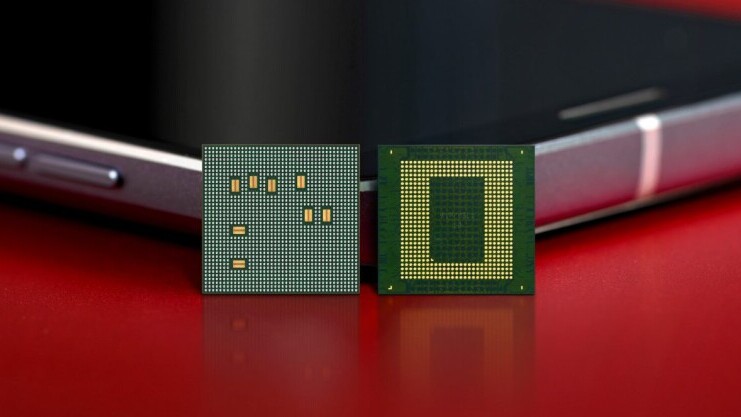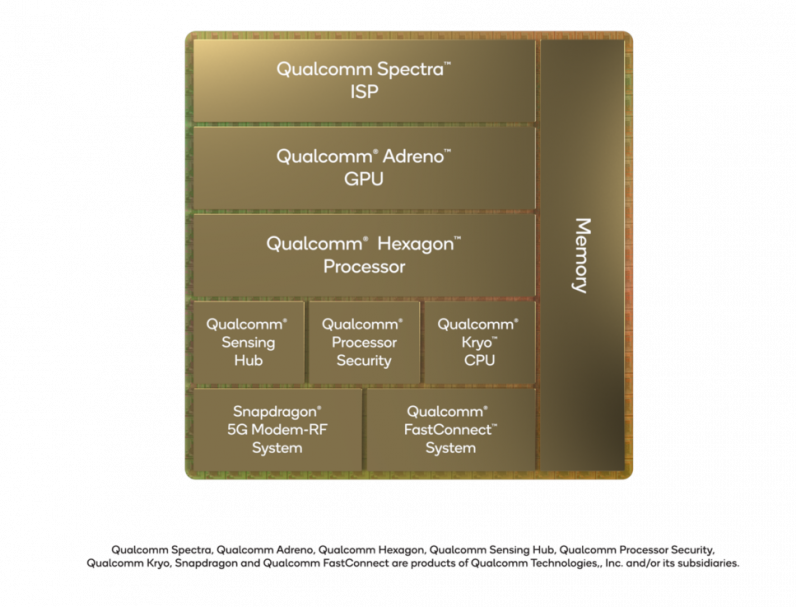
Apple has been in a league of its own when it comes to developing processors for phones and embedding its own AI-powered experience.
But this year, Google has thrown its hat in the ring by debuting its indigenous Tensor Chip to give the Pixel 6 a platform to showcase the company’s vision for smartphones.
This massive push by tech giants into the chip game means that Qualcomm, once a leading player in the smartphone industry, will face more competition than ever. So, this year, the chipmaker is relying heavily on AI to give its new processor, the Snapdragon 8 Gen 1, a bit more personality.
The company is introducing the 7th Gen Qualcomm AI compute engine, which is four times faster than its predecessor.

The chipmaker claims that the new unit is more powerful because it gets double the shared memory and a twice-as-fast Tensor accelerator for AI-related operations. Plus, the battery efficiency is 2.8 times better than this year’s flagship Snapdragon 888 processor.
And in addition to that, there’s a new 3rd-gen sensing unit that can enable ultra low-powered voice and connectivity experiences.
So now that we’ve seen the new chip’s AI specs, let’s take a look at what it can mean for phone makers, developers, and consumers.
What can the new AI unit do?
Vinesh Sukumar, Head of AI/ML Product Management at Qualcomm, said the new AI unit can handle a lot more workload easily. The company developed a demo with video imaging company Arcsoft, where a prototype phone based on the Snapdragon 8 Gen 1 could simultaneously perform face detection and apply the face bokeh effect.
Sukumar said that the new tech allows the software to detect more than 20 points on the face, so app makers can apply effects even when there’s a bad angle or small field of view.
The new sensing hub enables the chip to have always-on camera experiences for face and object detection while consuming low power.
There’s also a new ‘always secure’ module within the sensing hub that allows apps to conduct financial transactions in a safer way.
Why is Qualcomm partnering with companies for different experiences?
Until now, Qualcomm chips usually provided phone makers with a canvas to draw their own paintings. While that still might be the case, this year, the company is partnering with many firms to give different AI-powered experiences a bit more flair.

First, for an enhanced camera experience, including charming black and white shots and bokeh effects, Qualcomm is partnering with the German imaging company Leica. It has previously worked with manufacturers such as Huawei and Xiaomi. But this is a rare occasion when a chipmaker is working with a camera maker exclusively.
Sukumar said camera maker Leica was a key partner in developing AI to capture high-quality and dense images with great spatial details. He said that this tech will enhance dynamic range and clarity in pictures.
Qualcomm also partnered with health organization Sonde to showcase an app that records your voice for 30 seconds and detects your stress levels, asthma condition, and even COVID-19.
This is not entirely novel: Israeli startup Vocalis has achieved a similar feat with an app, but in Qualcomm’s case, all the processing is done locally to keep the user privacy intact.
One of the most important partnerships is with Hugging Face, an open-source startup working on language-based machine learning models. Qualcomm demoed a smart assistant which uses sentiment analysis to classify the most important notifications for you. Plus, you can look at a summary of notifications based on their priority.
The assistant can also answer questions like “Where’s my dinner meeting?” and “When should I leave?”
All this reminded me of Google Assistant. But Qualcomm’s Vice President and Head of AI Software, Jeff Gehlhaar, told me that this partnership will bring a broader portfolio of use cases. I’d be very interested to see an assistant that has better capabilities than Google Assistant, so bring it on Qualcomm.
What’s in it for developers?
Qualcomm said this year it’s introducing support for mixed-precision instructions in its SDK, so developers can make their AI models run faster while using less memory.
However, the biggest change is to introduce Neural architecture search (NAS) for Qualcomm chips. NAS enables data scientists to optimize a model for particular hardware without manually training it. They can also put constraints on the model’s size or other parameters based on the use case.
The chipmaker is partnering with Google Cloud to provide the backbone for this NAS offering. Qualcomm will use the Google Vertex AI solution for managed machine learning, so developers can train their models for its chips easily.
This partnership will allow developers to tune their models not just for mobile, but for Qualcomm’s XR, IoT, and automotive solutions as well.
A battle with Apple, Samsung, and Google
Apple always had its own chips on its iPhones, while Samsung uses a mix of its indigenous Exynos processors and Qualcomm’s Snapdragon processors for its devices.
This year, Google ditched Qualcomm for the first time, so the competition in the chip market is definitely heating up.
The US-based chip giant will need to show its processors are as capable as Apple’s, Samsung’s, or Google’s, if not better. And for that, it’s putting the onus on its AI chops.
It’ll be amazing to see companies like OnePlus, Samsung, or Xiaomi using Qualcomm’s new gear to bring out an AI experience that we’ve not seen on iPhones or Pixels. Game on!
Get the TNW newsletter
Get the most important tech news in your inbox each week.




